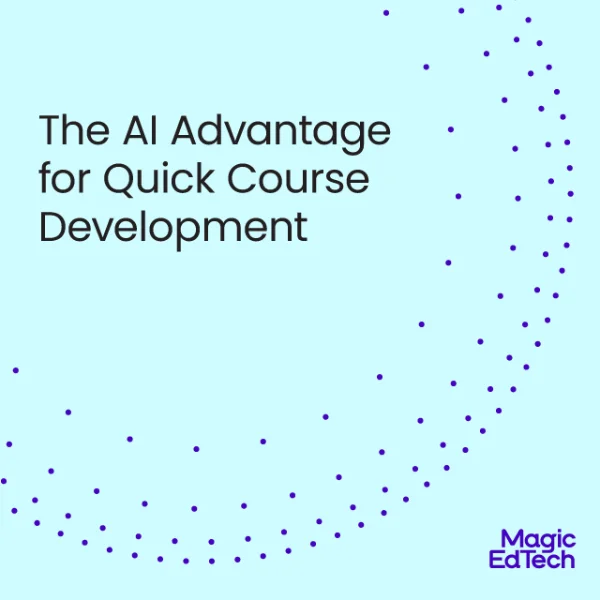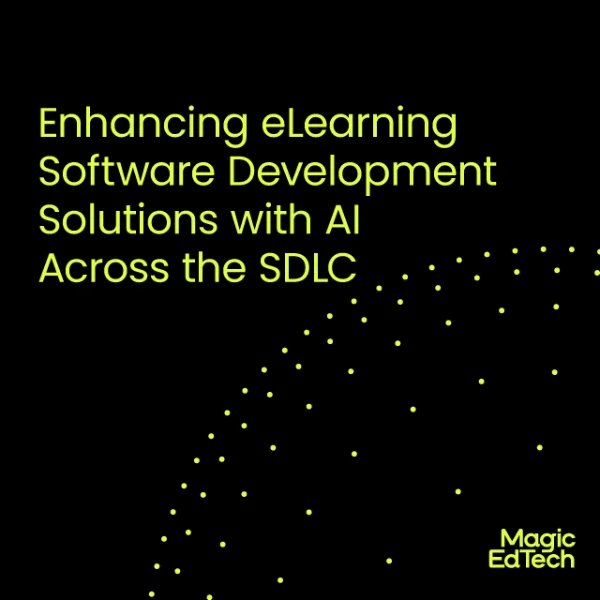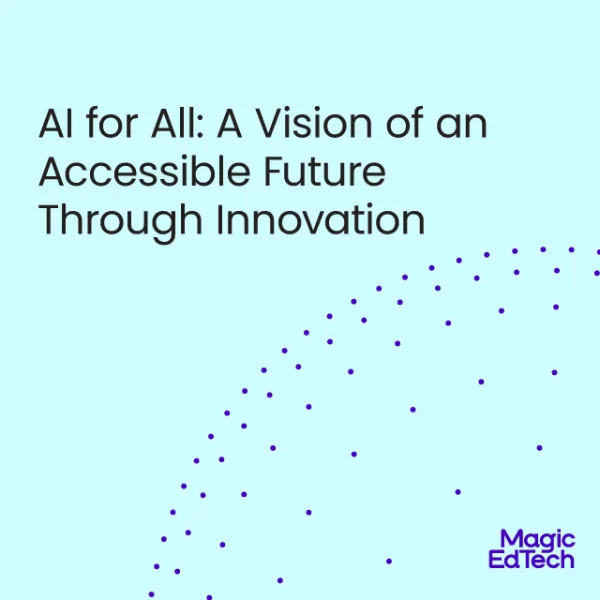6 Threats AI and ML Technologies Pose to Data Governance
- 28 September, 2023
- Reading Time: 6 mins
In the age of information, data has become the lifeblood of educational institutions, fueling decision-making, shaping student experiences, and propelling towards progress. Many important things need to improve in teaching and learning and teachers want to use technology while ensuring it’s safe, works well, and can be used by all students.
Just like voice assistants and tools that help with writing, teachers think they can use similar technology, like speech recognition, to help students with disabilities or speak different languages. This way, students can have a more personalized learning experience. Teachers are also looking at how artificial intelligence (AI) can help them create lessons and find suitable materials to use in class.
According to a recent report by Grand View Research, the global AI in education market is projected to expand by 36.0% from 2022 to 2030. As educational institutions increasingly invest in AI and EdTech, the volume of data generated is set to skyrocket. That’s an avalanche of information to manage, and it’s not without its perils.
So, how do we mitigate the threats of AI and machine learning (ML) to educational institutions? Keep reading to find out.
Growing Influence of AI and ML in EdTech
As digitization reshapes education, AI enhances learning experiences and improves educational outcomes. Here are some areas where AI is making a significant difference in EdTech.
- Personalized Learning Paths: AI-driven personalized learning platforms tailor content to individual student needs. These platforms use data analytics and machine learning algorithms to assess students’ strengths and weaknesses, adapting coursework in real-time.
- Intelligent Content Creation: AI-powered content generators streamline the process of creating educational materials. These tools assist educators in developing high-quality, relevant content more efficiently, ensuring students have access to up-to-date and engaging resources.
- Predictive Analytics for Student Success: EdTech companies leverage AI to predict students’ academic performance. By analyzing historical data, AI algorithms can identify early warning signs of students who may be struggling. Educators can then intervene proactively to provide additional support.
- Virtual Reality (VR) for Immersive Learning: AI-driven VR simulations provide students with immersive, hands-on learning experiences, from exploring historical events to dissecting complex scientific concepts.
- Smart Grading and Feedback: AI-driven grading systems automate the assessment process, saving educators time and providing students with immediate feedback. These systems have natural language processing capabilities, allowing for detailed assignment feedback.
- Adaptive Testing: Traditional standardized tests often fail to accurately measure a student’s true abilities. AI-powered adaptive testing tailors questions to the student’s skill level, providing a more accurate assessment of their knowledge.
- Language Learning Enhancement: AI-driven language learning applications use speech recognition and natural language processing to help students master new languages. These tools offer personalized lessons, pronunciation feedback, and real-time translation assistance.
Risks Involved in Using AI and Machine Learning with Data Governance
AI in Data Governance can bring significant benefits to educational institutions. However, it also carries certain risks that need careful consideration. Let’s categorize and explore these risks and discuss ways to manage them effectively.
1. Data-Related Risks
AI systems heavily rely on the data they are trained on. Poor quality, incomplete, or data in the wrong context can lead to erroneous or biased outcomes. Ensuring the data is high quality and relevant to the AI system’s purpose is crucial.
2. AI/ML Attacks
There is a growing concern about machine learning data governance and potential security weaknesses in AI systems. Data governance in education is prone to attacks that can fall into categories such as data privacy attacks, data poisoning, and model extraction. Assessing and addressing these vulnerabilities is essential to protect AI systems from malicious intent.
- Data Privacy Attacks: In data privacy attacks, attackers may infer sensitive information from the training data set, compromising data privacy.
- Training Data Poisoning: Data poisoning involves contaminating the training data, affecting the AI system’s learning process or output.
- Adversarial Inputs: Adversarial inputs are designed to bypass AI systems’ classifiers and can be used maliciously.
- Model Extraction: Model extraction attacks involve stealing the AI model itself, which can lead to further risks and misuse of the model.
3. Testing and Trust
AI systems may evolve and become sensitive to environmental changes. Testing and validating AI systems can be challenging due to their dynamic nature. Lack of transparency in AI systems can also lead to trust issues. Bias in AI systems is another concern that could result in unfair outcomes.
4. Compliance
AI implementations should comply with existing internal policies and regulations. Regulatory bodies are increasingly interested in AI deployments, and organizations must monitor and adhere to relevant regulations.
5. Discrimination in AI
AI systems can potentially lead to discriminatory outcomes if not implemented correctly. Factors such as biased data, improper training, or alternate data sources can contribute to discrimination. Existing legal and regulatory frameworks prohibit discrimination and must be adhered to.
6. Interpretability
Interpretability relates to the ability to understand how AI systems make decisions. This is crucial for detecting and appealing incorrect decisions, conducting security audits, and ensuring regulatory compliance. Interpretability also helps build trust in AI systems.
Strategies and Best Practices to Reduce AI and ML-Related Risks
AI introduces new ways for people to interact. Students and teachers can now communicate with computers and each other using natural actions like speaking, gesturing, and drawing. AI can even respond in ways that resemble human conversation. These new ways of interacting can be constructive for students with disabilities.
Here are some of the best practices you can follow to reduce AI and ML related risks in your educational institution.
Keep People Involved
It would be best to involve teachers and others to see what’s happening and make decisions when using AI. You must ensure people stay a part of the process when using AI.
Make AI Fit Education Goals
Decision makers in education and those who study it judge how good an AI tool is by what it does and how well it matches our teaching and learning goals. Think about what makes a good AI tool for education.
Use Modern Teaching Ideas
You need to use the latest teaching ideas and learn from experienced teachers. It would help if you also made sure that AI is fair for everyone, including students with disabilities and those who are learning English.
Build Trust
Many people need to learn about educational technology and AI. You must work on building trust and ensure that new educational technology is trustworthy.
Involve Educators
Ensure that teachers and other educators are part of the process when you use AI in education. They should help decide when and how to use AI and be informed about the risks.
Study How AI Fits Different Situations
Research how AI can be used in different situations, like with different types of learners and in other places. Researchers should also find ways to make AI safer and more trustworthy for education.
Create Rules for AI in Education
We already have rules for privacy and security in educational technology. But with AI, we need new rules and guidelines to make sure it’s safe and functional. Include everyone’s opinions in creating these rules, and they should cover things like how AI is used and how data is handled in education.
Final Thoughts
AI presents both opportunities and risks. Understanding and categorizing these risks, implementing strong governance, and ensuring interpretability and fairness are essential to managing AI in organizations effectively.
The fusion of AI and EdTech opens new possibilities, from personalized learning paths to immersive VR experiences and intelligent content creation. At Magic EdTech, we are committed to leveraging the full potential of AI to provide innovative solutions that have a robust data governance framework and empower educators.
As the EdTech landscape continues to evolve, we help you stand at the forefront, shaping the future of education through technology. Jump on the AI and ML bandwagon today.
Schedule a call with our experts today and create a platform that offers AI-powered educational excellence.





